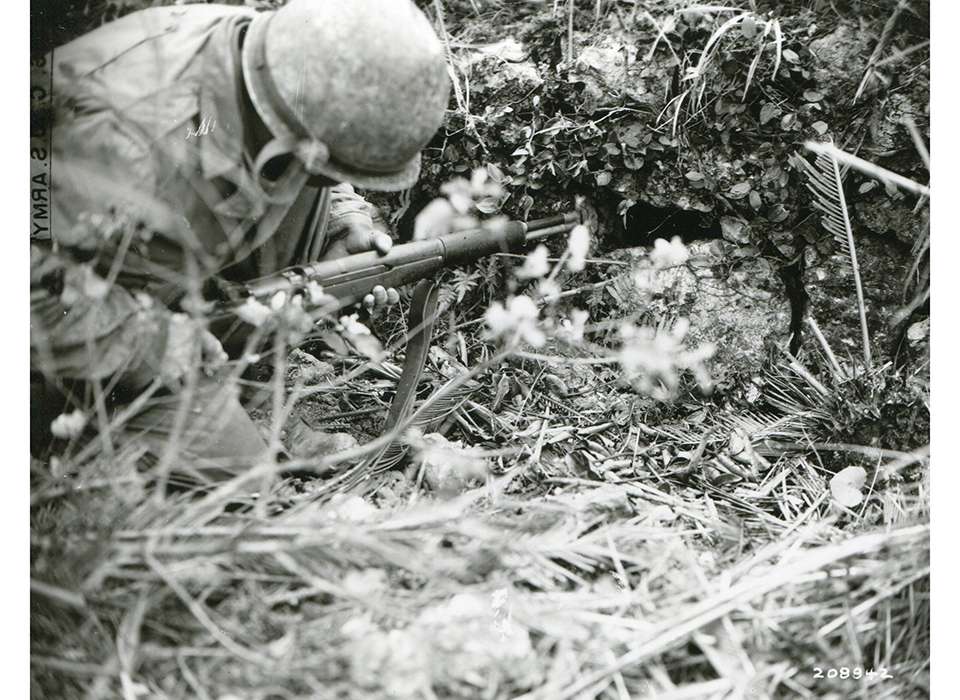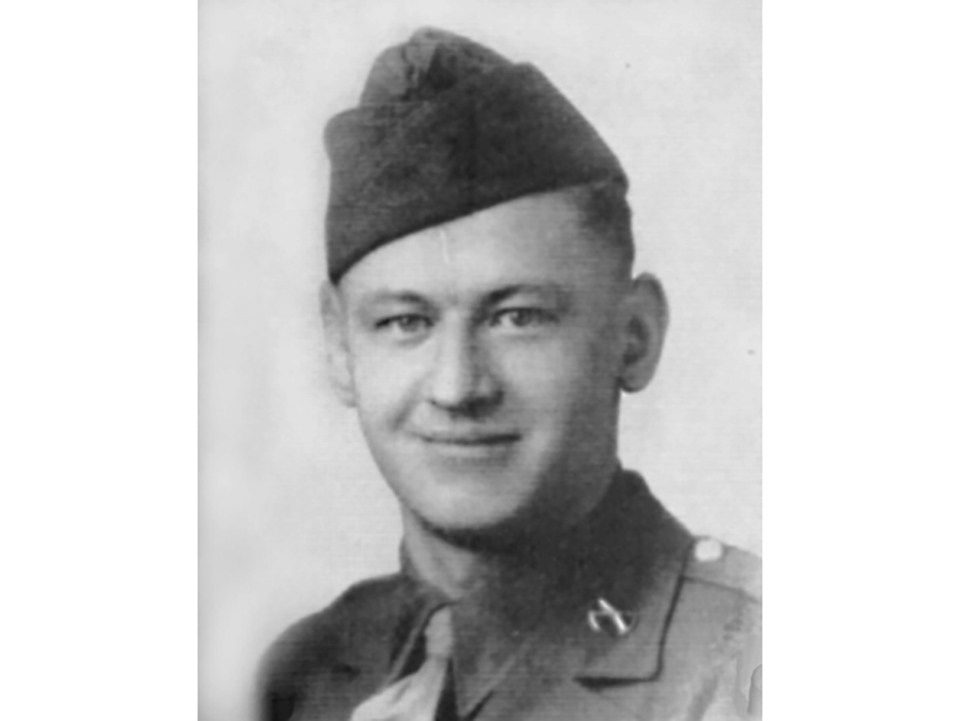Okinawa is known as the last major campaign of World War II. It was the largest campaign of the Pacific War, involving over half a million combatants from five Allied nations. The campaign was fought savagely in the air, on the land and across the sea. In a war that had seen some of the most violent fighting in human history on some of the most unforgiving terrain and locales on the planet, Okinawa and the fight ashore made other Pacific campaigns pale in comparison.
American strategists saw Okinawa as both a staging point for the eventual invasion of Japan, and a dress rehearsal for that event. The largest of the Ryukyu Islands, and part of Japan’s Kyushu region, it was known that the island held a large civilian population and a terrain similar to that of Japan’s southernmost main islands. The civilian population of Okinawa, which was made up of native Okinawans and Japanese, numbered somewhere in the neighborhood of 300,000 people. This concentration of subjects of the Empire was easily the largest the Americans had faced in the entirety of the war. The civilian reaction to both the Americans and their own Japanese military would provide a horrific blueprint to what might lay ahead if the United States would indeed invaded Japan itself.
With its large size and close proximity to Japan, Okinawa and its Kadena airfield would provide American forces with a support base close to the Home Islands. Kadena would be able to support troops in Japan with relatively close air strikes from medium bombers and fighter aircraft. Okinawa itself, with its natural harbor, would also provide naval port facilities for Allied ships that would be needed to support the land invasion of Japan. The island would also house hospital units to treat the massive amount of American wounded that were anticipated for the invasion of Japan.
On the morning of April 1, 1945 an Allied fleet of over 260 warships swarmed the seas around Okinawa. It was the largest Allied fleet ever to put to sea in the Pacific theater, and it was needed. The warships were there to protect the fleet of over 100 assault transports and supply ships needed to put ashore over 200,000 American combat troops of the newly formed Tenth Army that would be needed to defeat Japanese General Mitsuru Ushijima’s army of over 67,000 Japanese defenders.
Expecting fierce resistance, American forces landed on the western coast of Okinawa virtually unopposed. American infantry, tanks, artillery and supplies poured ashore as soldiers of the 7th, 27th, 96th (and later 77th) Infantry Divisions, alongside their Marine brothers in the 1st and 6th Marine Divisions, swept aside paltry resistance and raced across the island. The land campaign was moving so fast that objectives that were slated to be taken two weeks after L-Day were captured by the third day of the campaign. Japanese resistance was fierce when encountered, but the defense of the island, at least the northern portion of it, was almost non-existent. Up to this point, the only area of significant resistance lay in the operational area of the 6th Marine Division, who had cornered a sizeable force of Japanese near the Motobu Peninsula. Marines of the 22nd Regiment forced the enemy through the peninsula and isolated them near a series of craggy ridges, called Yae-Dake, where the Marines eliminated the Japanese there by the 18th of April.
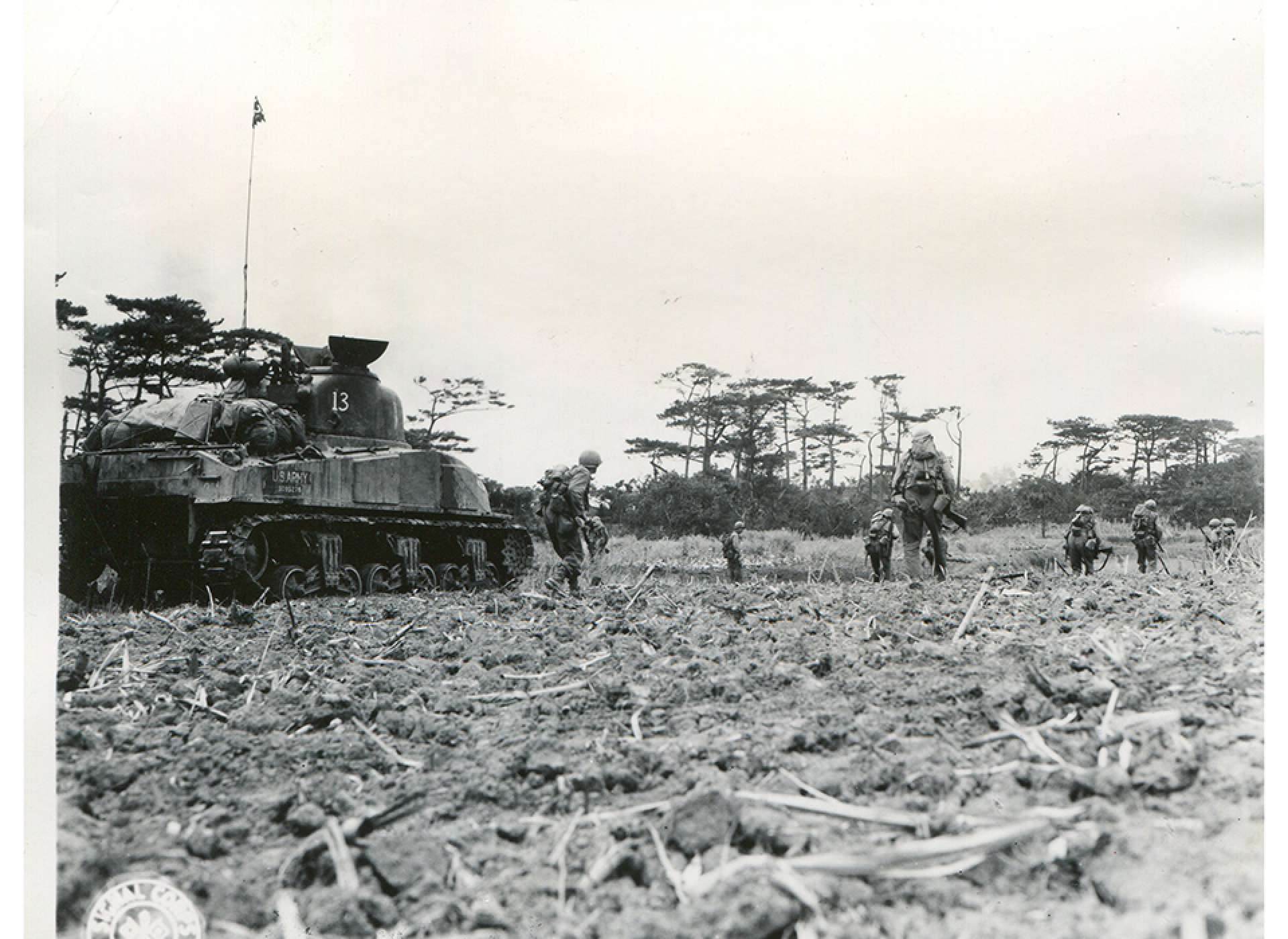
E Company, 382d Infantry, rolls forwards through heavy enemy fire on the southern front on Okinawa Island. A tank supports infantrymen as they cautiously move forward.
The land campaign was going incredibly well—in fact, almost too good to be true. With the northern end of Okinawa clear of enemy resistance, the Tenth Army wheeled south and made plans to mop up the remainder of the island. For the most part, Japanese resistance had been weak. There were locations of stiff fighting, like the Motobu Peninsula and Cactus Ridge, but overall, Japanese defenders had been less than fanatical in holding their territory. Completion of the campaign would be just a matter of days away, or so it was thought.
As the American advance pushed further south, it ran headlong into fortified Japanese positions and heavily defended caves near Kakazu Ridge, the first defensive perimeter in what would be called the Shuri Line. The rapid advance and relatively light American casualties sustained so far on Okinawa ended. American commanders realized immediately that the Japanese had been withholding their strongest defensive efforts, and had deployed them in an area in which the terrain favored the defenders. There would be no more lightning advances. In a period of just 24 hours, American casualties ashore nearly doubled. Okinawa, it was realized, would become a bloody slugfest.
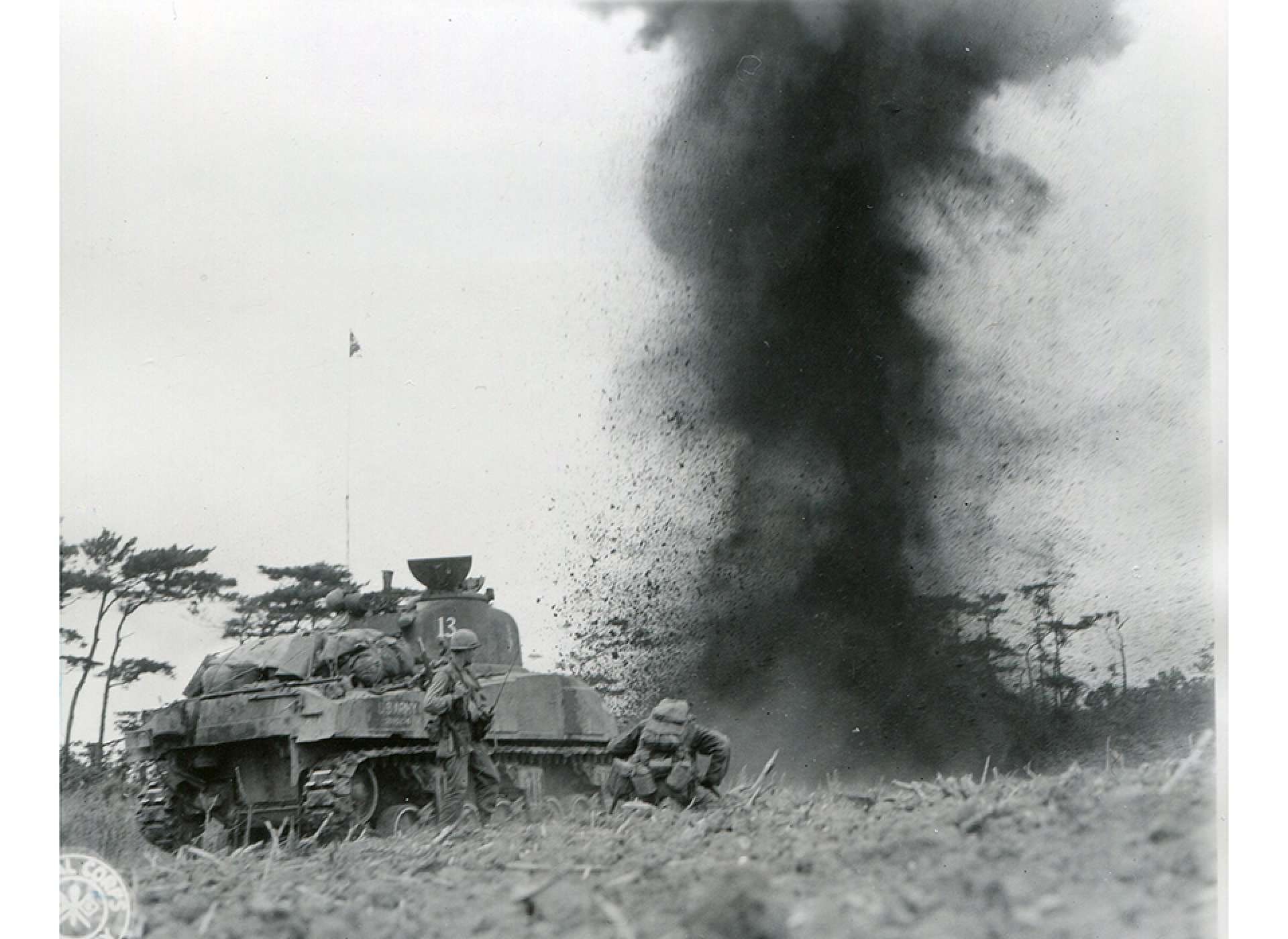
Army division blasts way through minefield. Tanks and infantrymen of a US Tenth Army Division blast their way through a minefield as Japanese machine gunners keep foottroops crouching behind their tanks.
The Army’s 96th Infantry Division lay before Kakazu Ridge on the morning of April 8, 1945 and prepared to make an assault on the positions that had halted their initial advance. With no preparatory artillery barrage, the two companies of infantry jumped off from their positions before day break so as to achieve surprise. One company from the 96th under the command of Lieutenant Willard Mitchell reached the top of Kakazu before Mitchell and his men were pinned down by furious Japanese fire. The Americans were unable to dig in on the rough coral tops of Kakazu, and thus were exposed to well-aimed rifle fire and shrapnel from all angles. The Japanese, knowing they had their enemy at their mercy, sprang from their caves hurling grenades and satchel charges at the pinned down American infantry. The Japanese assault was halted with heavy losses. Mitchell’s men repelled the Japanese assault in hand to hand combat with fixed bayonets and rifle butts.
As Mitchell’s company was fighting for its life atop the ridge, another two companies under the command of Captain Jack Royster and Lieutenant Dave Belman advanced opposite Mitchell’s position. They, too, became pinned down. Two Japanese machine guns, well emplaced near the entrance of two separate caves, pinned Royster and Belman’s companies down. Seeing an opportunity to place fire on the Japanese machine gun crews, PFC. Edward Moskala crawled forward, unobserved by enemy eyes, and opened fire on the two Japanese positions with his Browning Automatic Rifle after lobbing grenades at the crews. Moskala’s one-man assault eliminated the Japanese machine guns and allowed Belman's and Royster’s companies to begin a withdrawal. The two infantry units were able to move off of the ridge crest and into the valley below when the Japanese realized their enemy’s intent. Furious enemy fire poured in on the withdrawing Americans, forcing them to take cover in previously occupied Japanese caves. Royster, half blinded by a mortar wound in the face and knowing full well that his company was on the verge of being overrun and annihilated, called his battalion for further support. Infantry support pushed forward only to be stopped in its tracks by heavy Japanese mortar and machine gun fire. Royster radioed back to his battalion headquarters and requested a smoke barrage so they could retreat. He was ordered to hold the ridge at all costs. His position untenable, Royster again radioed for smoke and received the barrage, only to have the first barrage blow back in his own face due to wind. A second barrage was requested and then a third before enough smoke drifted in front of Royster’s position to allow him and his battered company to withdraw.
The exhausted GI’s of Royster's and Belman’s companies began to withdraw, crawling under enemy fire and dragging their wounded behind them as they crawled away. PFC Moskala, who had earlier eliminated two enemy machine gun positions, again volunteered to act as rear guard as his company pulled away from the fight. Moskala provided fire support from his isolated position for three hours, killing over 25 of the enemy, while his comrades crawled away. Seeing his own opportunity to retreat, Moskala left his position and ran down the face of the ridge to rejoin his company. As he did so, he came across a single wounded man who had been mistakenly left behind. Moskala again provided fire support as the wounded man escaped down the ridge. Crawling back down the ridge, he again volunteered fire support, and moved towards another wounded member of his company. Shielding the man with his own body while killing at least four more Japanese, Moskala was struck down by enemy fire and killed. For his selfless acts of compassion and bravery, Edward Moskala was posthumously awarded the Medal of Honor.
Lieutenant Willard Mitchell’s company, still holding its position atop the ridge, now became the focus of renewed Japanese efforts to destroy him and his men. By 1600 hours Mitchell realized his position and that of his company was hopeless. Of the 89 men in his company, 15 had been killed and only 3 were uninjured by enemy fire. His ammunition supply was critical, at best, and the last Japanese attack had been made by well over 100 enemy soldiers. Stripping what ammunition could be found from the dead and utilizing captured Japanese weapons, Mitchell planned a retreat. Like Royster before him, Mitchell called for a smoke barrage. The barrage worked flawlessly, allowing Mitchell and his men to retreat from the position they had held fearlessly since sunrise.
The first American effort to capture and hold Kakazu Ridge had failed. The 383rd Infantry Regiment, of which Mitchell, Royster and Belham’s companies were a part, suffered terribly. Over 300 men were casualties in the initial fight for Kakazu Ridge, with the regiment’s 1st Battalion officially at half strength and unable to continue offensive operations.
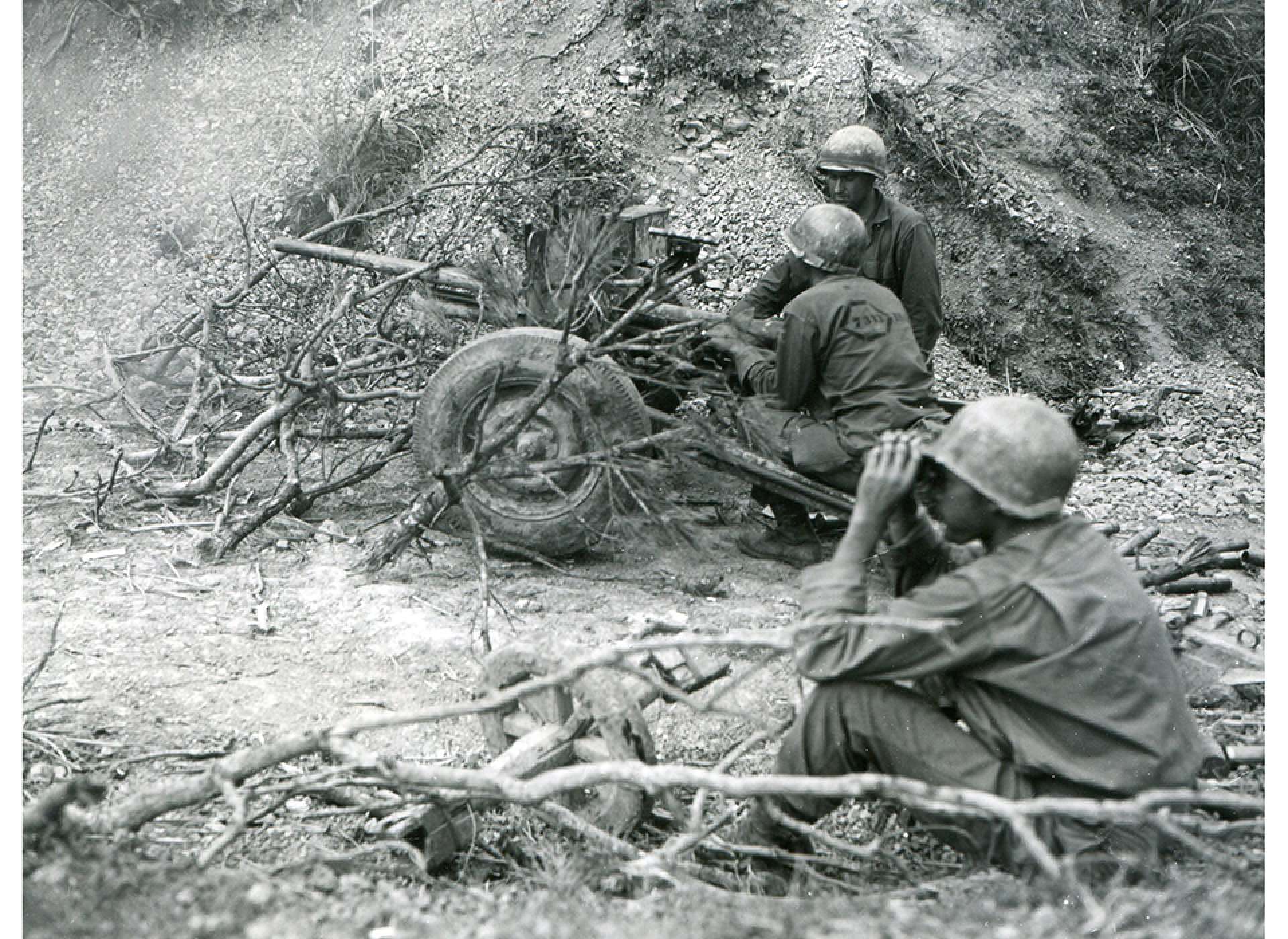
A 37mm anti-tank gun prepares to fire point-blank at a Japanese pillbox on Conical Hill on Okinawa. The 383rd Infantry Regiment of the Army's 96th Infantry Division found this small weapon effective.
The fight for Kakazu Ridge did not end with the withdrawal of the 383rd’s 1st Battalion. Further offensives pounded the area until the 96th Infantry was relieved on April 12. The veteran 7th Infantry Division took over their former positions, and likewise ran into a Japanese meat grinder on and around the ridge. It, too, was worn to a frazzle by the Japanese defenses. The 7th Infantry Division, though battered and worn down, still packed plenty of power. A Japanese counterattack against the American positions resulted in heavy losses for the Japanese and forced the Japanese to take a permanent defensive position around Kakazu. After defeating the Japanese counterattack, the depleted 7th was relieved by the 27th Infantry Division who also wore themselves down on the Japanese positions.
Not until April 21 did American infantry succeed in capturing Kakazu Ridge. And even then, the Japanese defenses had been reduced to a pocket of die-hard defenders who had to be rooted out to the last man. Kakazu had nearly bled three Army divisions white and had stalled American offensive plans in the area for three weeks, and while Kakazu Ridge had been a nightmare, the worst was yet to come.
This article is part of an ongoing series commemorating the 75th anniversary of the end of World War II made possible by Bank of America.
Seth Paridon
Seth Paridon was a staff historian at The National WWII Museum from 2005 to 2020. He began his career conducting oral histories and research for HBO’s miniseries The Pacific and holds the distinction of being the first historian hired by the Museum’s Research Department. In the 12 years he was Manager of Research Services, Seth and his team increased the oral history collection from 25 to nearly 5,000 oral histories.
Cite this article:
MLA Citation:
APA Citation:
Chicago Style Citation:
